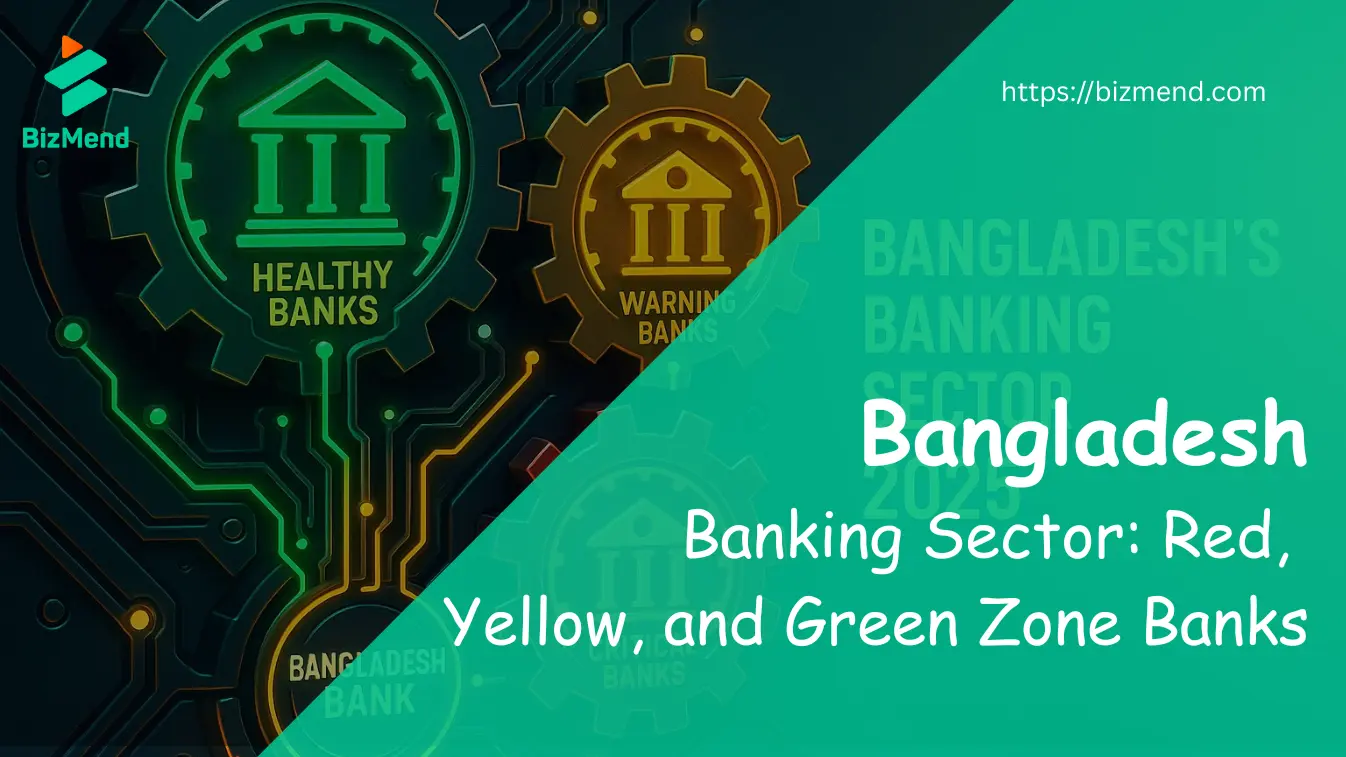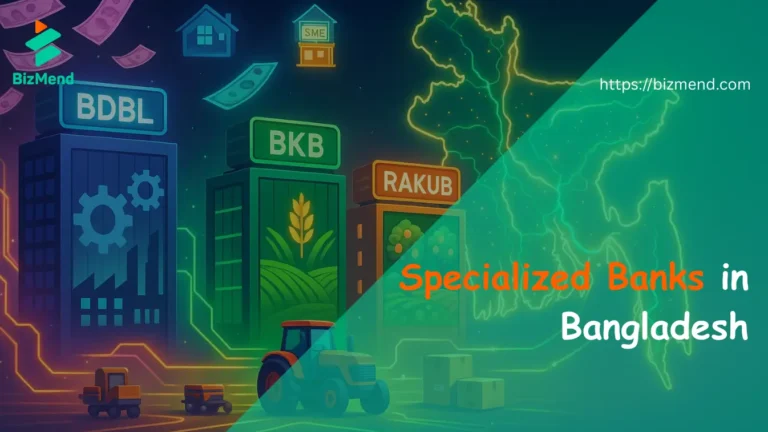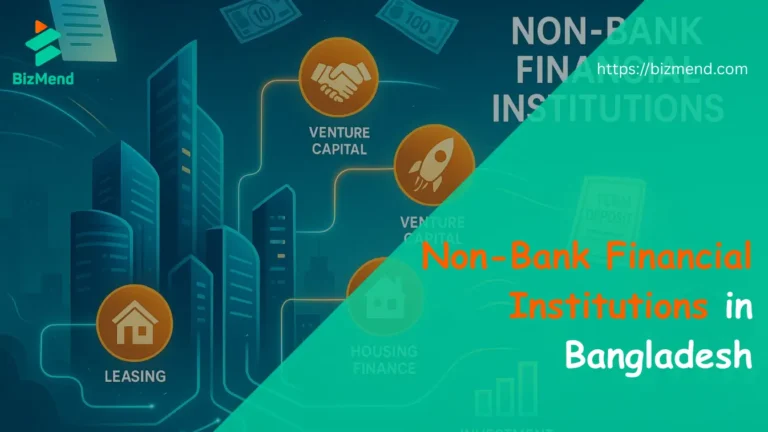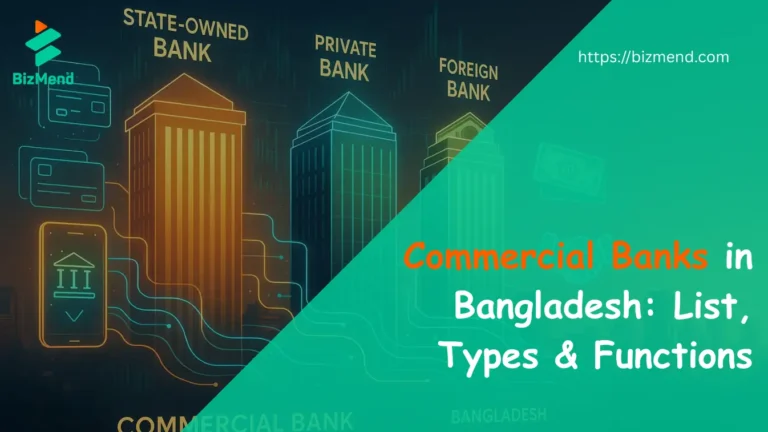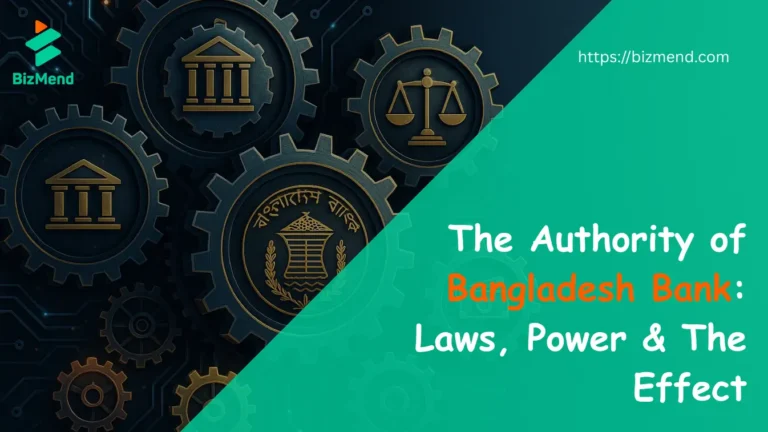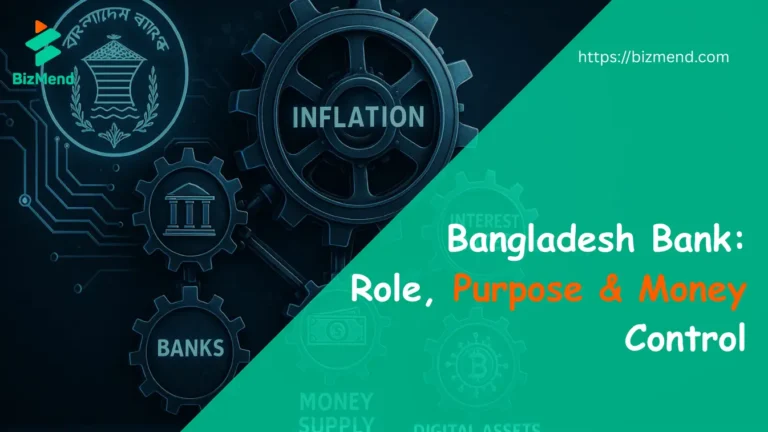“If you don’t know who’s swimming naked, wait until the tide goes out.”
— Warren Buffett
That quote? It fits Bangladesh banking sectors like a tailored punjabi during Eid. For years, many banks in this country looked fine on paper. But by 2025, the tide has pulled back, and now, we finally see which banks are rock solid, which are barely floating, and which are hanging by a thread (or a merger plan).
If you’re planning to open a business bank account here, or you’re a foreigner browsing the legal setup process, understanding the banking zones is no longer optional. It’s your due diligence shortcut, especially if you’re stepping into BEZA, Hi-Tech Parks, or trying to get a startup loan as a foreign entrepreneur.
So let’s decode this map: Red Zone, Yellow Zone, and Green Zone with plain talk, current data, and zero marketing makeup.
Understanding the Red, Yellow, and Green Zones in Bangladesh’s Banking Sector
Let’s face it: banking in Bangladesh isn’t just about interest rates and service charges anymore. In 2025, it’s about survival, stability, and scrutiny. Every bank, government, or private, is now walking under a spotlight, thanks to the Bangladesh Bank’s health-check system, which has quietly but firmly sorted banks into three performance zones:
- Green: You’re healthy and safe.
- Yellow: You’re slipping, coughing even, and the regulators are watching.
- Red: You’re already in the ICU. Maybe sinking next.
But what does this actually mean?
Let’s break it down; simply, clearly, and like you’re sitting with someone who works in banking but still remembers what a queue at the ATM feels like.
Green Zone Banks (Stable and Reliable)
Let’s talk about the stars of the list first: the green zone banks. These are the banks that the Bangladesh Bank still trusts. They’ve passed the stress tests. Their balance sheets are in order. And if you’re a business owner, especially a foreign entrepreneur, you’ll want to start your journey here.
What defines a Green Zone bank?
- They meet or exceed capital adequacy standards.
- They have low non-performing loans (NPLs).
- Their corporate governance and financial compliance are trusted.
Banks in the Green Zone (2025):
- BRAC Bank
- The City Bank
- Eastern Bank (EBL)
- Bank Asia
- Trust Bank
- Dutch-Bangla Bank
- Islami Bank Bangladesh PLC
- Pubali Bank
- HSBC Bangladesh
- Prime Bank
Why They Matter:
- Safe for foreign currency accounts and repatriation.
- Often BIDA-friendly for project-based capital.
- Comfortable handling startup and SME loans, LCs, and foreign investments.
- Digitally capable, globally connected, and transparent.
If your search history includes: “how to start a business in Bangladesh,” “how to open a business bank account in BD,” or “SME loans for foreigners,” start with these.
Yellow Zone Banks (Warning Bells Ringing)
Not drowning, but definitely coughing. Yellow Zone banks are under close watch. They still operate normally, but with issues like high non-performing loans, weak governance, or capital strain.
What lands a bank in the Yellow Zone?
- Higher-than-usual loan default ratios.
- Possible shortfalls in corporate governance or internal audits.
- Concerns about profitability or capital strength, but not yet disastrous.
Banks in the Yellow Zone (2025):
- Bangladesh Development Bank
- EXIM Bank
- NRB Bank
- Jamuna Bank
- Social Islami Bank
- One Bank
- Premier Bank
- SouthEast Bank
- Mutual Trust Bank (MTB)
What’s Going On:
- They’re still offering all standard services.
- But regulators are monitoring liquidity and operations.
- Some are even being eyed for future mergers or capital restructuring.
Heads up: These banks still serve clients, but with caution flags. If you’re seeking start-up loans or registering a new company, Yellow Zone banks may delay approvals or offer reduced limits. So, if you must bank with them, check their current standing, ask for credit ratings, and avoid long-term deposits unless you’re fully informed.
Red Zone Banks (Critical or Under Rescue)
This is the “do not touch unless you must” list.
Bangladesh Bank’s Financial Stability Department has red-flagged these for structural weakness, operational failure, or insufficient capital buffers.
What qualifies a Red Zone Bank?
- Critically high defaulted loans (NPL >20%)
- Risk of liquidity crisis or failing stress tests
- Ongoing merger talks or rescue efforts
Banks in the Red Zone (2025):
- Janata Bank
- Agrani Bank
- Rupali Bank
- BASIC Bank
- Bangladesh Commerce Bank Limited
- National Bank Limited
- National Bank of Pakistan
- Padma Bank
- Social Islami Bank Limited (SIBL)
- AB Bank
What It Means:
- Some have already seen intervention.
- Mergers are on the table (or happening quietly).
- Customers may experience delays, withdrawal limits, or account migration issues.
Pro Tip 1: If you’re a foreigner planning to invest, repatriate capital, or open large-scale business accounts, avoid banks in this category unless you have insider knowledge or serious legal coverage.
Pro Tip 2: Interested in learning more about Bangladesh’s banking sector? Check out our blogs on Bangladesh’s Government, Private, and Foreign banks.
A Quick But Important Note
This zoning list isn’t permanent.
Bangladesh Bank’s zone classifications can shift over time; sometimes quietly, sometimes publicly. A bank that’s “green” today might slip into yellow six months from now due to capital issues, governance gaps, or loan defaults. Similarly, a red-zoned bank may recover post-merger or under new leadership.
What influences the zone shifts?
- NPL ratios (Non-Performing Loans)
- Capital adequacy
- Liquidity strength
- Regulatory audits
- M&A activity (Mergers and Acquisitions)
- Policy or leadership changes
So always check the latest Bangladesh Bank circulars, reputed local news sources, or consult an expert before making big commitments, especially if you’re a foreign investor setting up shop here.
Think of this blog as your snapshot, not the whole CCTV footage.
What This Means for Foreign Entrepreneurs
Let’s be honest: if you’re a foreigner trying to do business in Bangladesh, you’re not just picking a bank. You’re picking your first partner in paperwork.
Whether you’re:
- Registering a company (maybe in Dhaka, or inside a Hi-Tech Park),
- Going through BIDA for investment entry,
- Signing a lease agreement and naming a local director,
- Or exploring those SME-friendly government loan options for newcomers,
Your bank’s zone status matters.
Why? Because the green zone banks, think the BRACs, City Banks, Trusts of the world, don’t just issue account numbers. They understand what you’re actually trying to do. They’re already familiar with capital injection rules, director due diligence, remittance certificate protocols, and export-import credit needs. Which means:
- Your remittance won’t get stuck over missing “supporting documents.”
- Your capital repatriation paperwork will be guided, not ignored.
- Your audit trails will match what NBR and BIDA want to see.
And yes, applying for a work permit or business visa extension? Green zone banks will give you the account maintenance letters and payment records you need, without the mysterious delays red-zoned banks are becoming infamous for.
So, while you weigh your setup costs or explore your tax plans, don’t treat banking as an afterthought. In Bangladesh, the bank you choose becomes part of your legal footprint, for better or worse.
And that, dear folks, makes zone awareness not a luxury, but a survival instinct.
But Wait, Why the Zones?
These zones aren’t just some fancy tags; they’re how Bangladesh Bank tells the solid banks apart from the ones walking on thin ice.
Each zone gives you a peek into how financially sound a bank is, how much risk it’s carrying, and how well it’s being run, based on red flags like bad loans, capital cushion, and how responsibly it’s managed.
- Red Zone banks are flagged for serious structural concerns, often leading to forced mergers, regulatory interventions, or liquidity restrictions.
- Yellow Zone means under watch; manageable now, but not risk-free.
- Green Zone means the bank is operating with confidence and control.
These categories are based on insights from Bangladesh Bank’s Financial Stability Report and off-site monitoring. While the full list isn’t made public, trustworthy media sources, internal meetings, and confirmed banking data leaks help give us a clear picture.
If you’re planning to open an account, transfer capital, or repatriate profits, knowing the zone is less of a tip and more of a warning label.
Bangladesh Bank: The Silent Backbone of Financial Discipline
Throughout this blog, you’ve seen one name crop up again and again: Bangladesh Bank. Whether it’s placing a bank in the red zone, hinting at mergers, or keeping an eye on non-performing loans, this central institution quietly anchors the country’s entire financial system.
But why does it have so much say? And why should you, whether a founder, a remitter, or a first-time investor, pay attention to what the Bangladesh Bank declares?
Why Bangladesh Bank actually matter? Well, let’s talk some facts here:
- It’s the central bank that keeps the country’s entire financial system steady and in check.
- It keeps banks in check, making sure they’ve got enough backup funds, follow fair lending rules, and don’t take risky bets with your deposits.
- It keeps an eye on things like loan defaults, reserve strength, and regulatory reports, then ranks the banks based on that.
- It steps in when things go wrong; sometimes quietly advising a fix, sometimes publicly warning the market.
- It signals trustworthiness because in a banking system, trust is everything.
So when Bangladesh Bank puts a bank under observation, it’s not just a bureaucratic move; it’s a signal to entrepreneurs, citizens, and even foreign stakeholders to either lean in or steer clear.
Without Bangladesh Bank’s steady hand, the zones we’ve discussed wouldn’t mean anything. With it? They’re a crucial financial compass.
Final Thought
The colors aren’t just labels; they’re warnings, welcomes, or warnings wearing makeup.
- Green means “Build.”
- Yellow means “Caution.”
- Red means “Reconsider.”
And in Bangladesh’s banking scene, that traffic light metaphor could save you more than time; it could save your capital, credibility, and sanity.
“Risk comes from not knowing what you’re doing.”
— Warren Buffett
So before you walk into any bank and sign the dotted line, read the zone it’s in. Because here, the shade of your bank’s zone could shape your entire business story.
FAQ
What do the Green, Yellow, and Red zones actually mean?
Answer: Think of it like a traffic light, but for your money.
- Green means you’re good to go; those banks are financially sound, safe, and efficient.
- Yellow means the engine’s rattling; still moving, but needs caution.
- Red? That’s where you pull the handbrake. Those banks are either under emergency fixes or slowly falling apart.
And trust me, when you’re trying to run a business, the last thing you want is your bank playing musical chairs with mergers.
Is it risky to open an account in a Red Zone bank?
Answer: Let me be straight with you: yes.
Even if they’re still open, Red Zone banks often face internal issues: frozen credit lines, poor service, delayed remittance processing, or even stricter oversight. You may not lose your deposit overnight, but you’ll likely lose peace of mind every other day.
So, unless you’re absolutely sure of every step, or have no better option, it’s best to hold off.
Can these zones change next year?
Answer: Absolutely.
Bangladesh Bank updates these classifications strictly based on performance, liquidity, and compliance. A Yellow Zone bank today might make a comeback, or slip further into the Red. That’s why it’s smart to re-check before renewing major deposits or applying for business loans next year.
Zone status is like a health checkup. It’s not permanent, but it’s a serious warning when it’s bad.
I’m a foreigner trying to set up a business. Should I only go with Green Zone banks?
Answer: Short answer: Yes, you should, especially in your first year.
Green Zone banks like BRAC, EBL, Sonali, or City Bank already understand how to handle BIDA letters, foreign currency accounts, capital repatriation… all that paperwork foreigners often wrestle with.
Start safe. You can always diversify later.
Why are some well-known banks in the Yellow Zone?
Answer: Good question, and a tough one.
Some Yellow Zone banks are big on branding but struggling behind the scenes with bad loans, weak audits, or expansion they couldn’t digest. Being popular doesn’t always mean being strong. That’s why the zone chart matters more than the logo.
Why does Bangladesh Bank classify banks into red, yellow, and green zones?
Answer: Because someone has to call out when things are quietly going wrong.
Bangladesh Bank doesn’t run ads or post flashy updates on social media, but it does constantly and strictly audit how healthy each bank is. The red, yellow, and green zoning system helps them, and all of us, track which banks are operating safely, which are slipping, and which might already be in trouble. It’s based on real metrics: capital strength, loan defaults, asset quality, and how responsibly a bank manages money.
Think of it like health check-ups; only here, your savings, salaries, and investments are on the line.
Can the Bangladesh Bank force a weak bank to merge or shut down?
Answer: It can. And sometimes, it must.
The Bangladesh Bank has the complete legal authority to step in when a bank poses a risk to the financial system, whether it’s from reckless lending, fraud, or just bad management. If a bank is deeply in the red zone and shows no sign of improvement at altogether, Bangladesh Bank can block it from disbursing new loans, recommend management changes, or even push for mergers with stronger institutions.
But it doesn’t act overnight. It gives warnings, monitors closely, and tries internal correction first. Only when public money is truly at risk, it acts. With protection, of course, not punishment, in mind.


